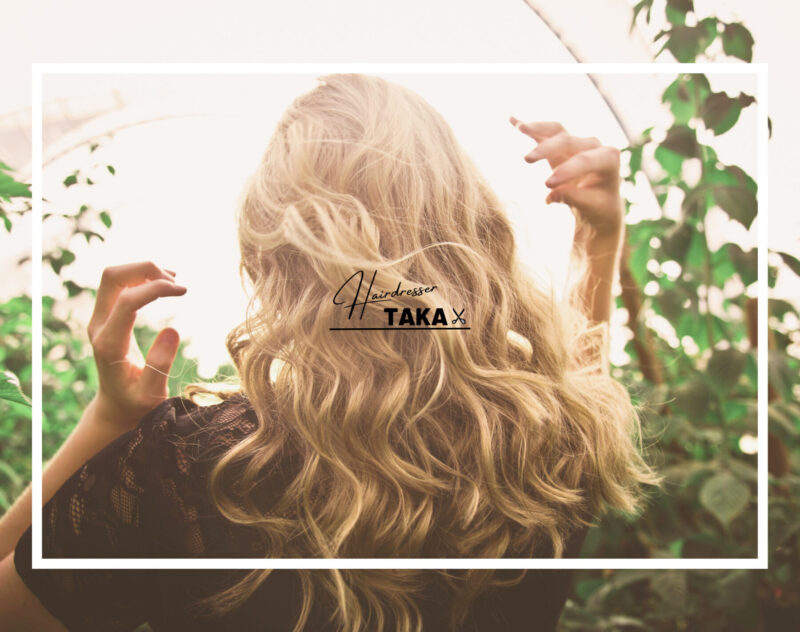Can You Get a Perm with Fine or Soft Hair? – Best Techniques for Hair Textures Often Seen in Western Clients

“My hair is soft and fine, and it’s hard to get volume… Can I still get a perm?”
This is a question I often hear from clients—especially those with finer hair textures or of Western descent.
The answer is: Yes (absolutely possible).
But it does require a bit of thoughtful technique.
■ A perm isn’t just about tight curls.
Many people think of perms as something that creates big waves or curls, but that’s only part of the picture.
A perm can be used to:
- add volume,
- create movement at the ends,
- adjust the silhouette of a hairstyle.
In other words, a perm is a technique to correct or control the overall shape of your hair.
Whether your hair is straight, slightly wavy, or anything in between—if the purpose is clear, we can design the right approach.
■ That wave you see on social media? It might not be a perm.
Those beautiful loose waves you see on Instagram or TikTok?
Often, they’re actually created with styling tools like curling irons—not permanent treatments.
Even when someone writes “This is a perm,” it may just be temporary styling.
That’s why, if you want long-lasting waves, it’s important to get proper consultation and technique tailored to your hair type.
■ Is it true that fine or soft hair doesn’t hold a perm well?
It’s true that people with fine or soft hair textures—especially those commonly seen in Western backgrounds—sometimes hear that perms won’t work for them.
Why? It’s mainly because there’s less protein mass inside the hair shaft.
That means the inner structure is weaker, making it harder to hold shape.
But there are ways to work around it.
For example, if you have short hair, a cold perm often works well.
Short hair wraps around the rods more tightly, so it holds the shape better and adds volume at the roots.
On the other hand, the longer your hair, the more holding power you need—so digital perms tend to be more stable for mid-to-long lengths.
■ Digital perms are recommended for medium or long hair—here’s why they work well for fine hair
There are two main types of perms:
- Cold perm: uses chemical solution and rods, no heat involved.
- Digital perm: uses solution + rods + heat to shape the hair.
For soft or fine hair, I recommend the digital perm.
Why? Because it allows thermal setting of the proteins to help hold the shape better.
■ What is heat-induced protein restructuring?
Sounds technical, but here’s the simple version:
“By applying heat to the hair, we help it hold its new shape more effectively.”
Think of an egg.
When you cook a raw egg, it becomes firm—like a boiled or fried egg.
Hair is similar. It’s made up of 80–90% protein.
By applying heat (around 40–80°C), we give the hair a gentle firmness that helps maintain wave structure.
And that’s exactly how we solve the issue of fine hair not holding shape well.
■ What about damage?
“Isn’t heat damaging?” you might ask.
But the truth is, because we can use a milder solution, it’s not necessarily more damaging.
In fact, with the right solution and temperature for your hair type,
it can sometimes cause less damage than a traditional cold perm.
■ A perm is possible regardless of ethnicity—as long as it fits your hair type
“My hair is too fine—it won’t work.”
“My hair’s too thick for this.”
Many people give up based on assumptions.
But don’t worry.
Today, it’s not about “Can I get a perm or not?”—
it’s about how we do it and why we do it.
At my salon, we welcome clients of all backgrounds. For those with soft or fine hair,
I usually recommend a digital perm customized to match your hair’s unique needs.
■ One last thing.
A perm isn’t just about adding curls.
It’s a tool to make your daily life easier—by giving your hair more volume, movement, and manageability.
So before you give up because of your hair type,
let’s have a conversation.
Together, we’ll find a method that works—gently, naturally, and just for you.


